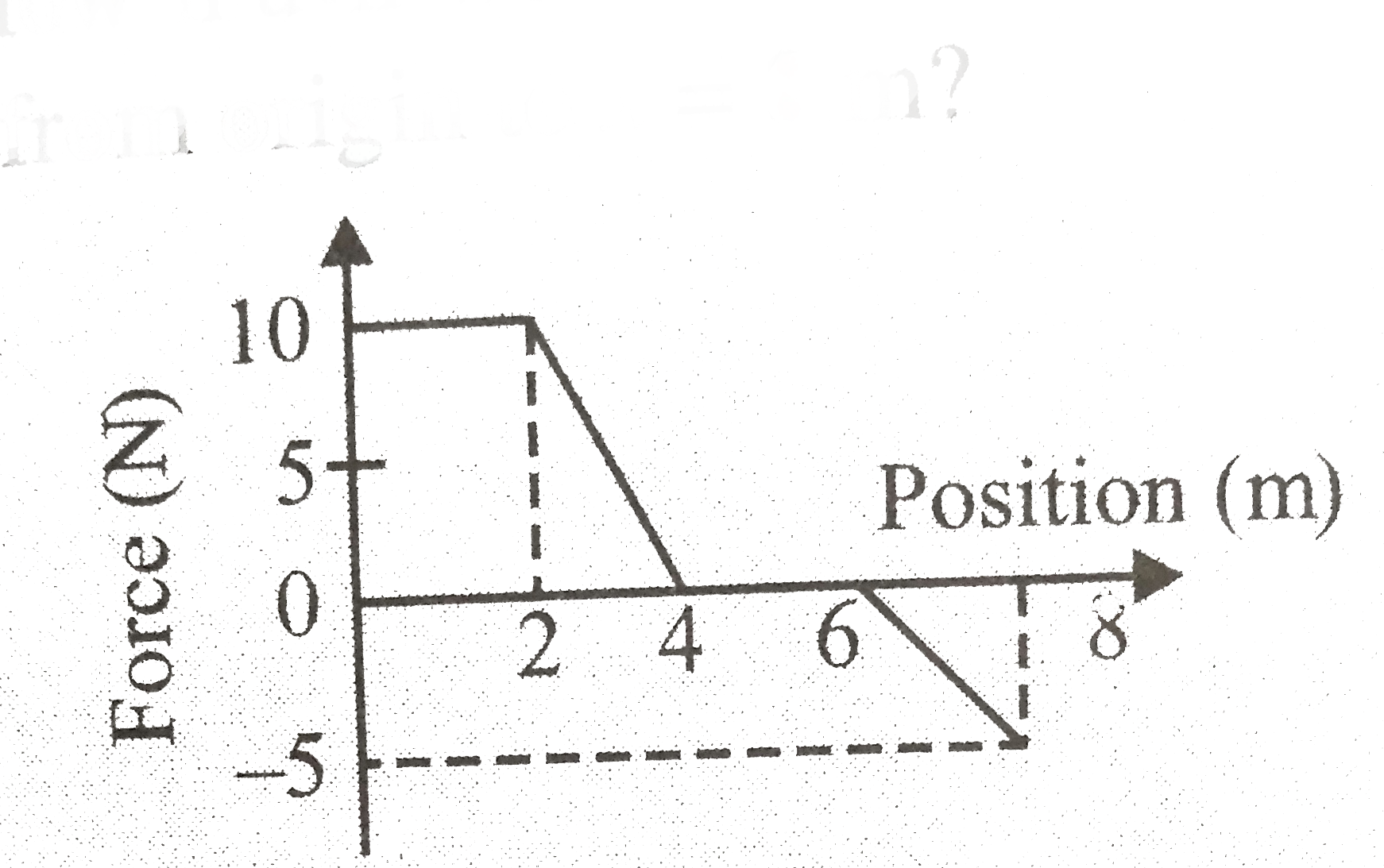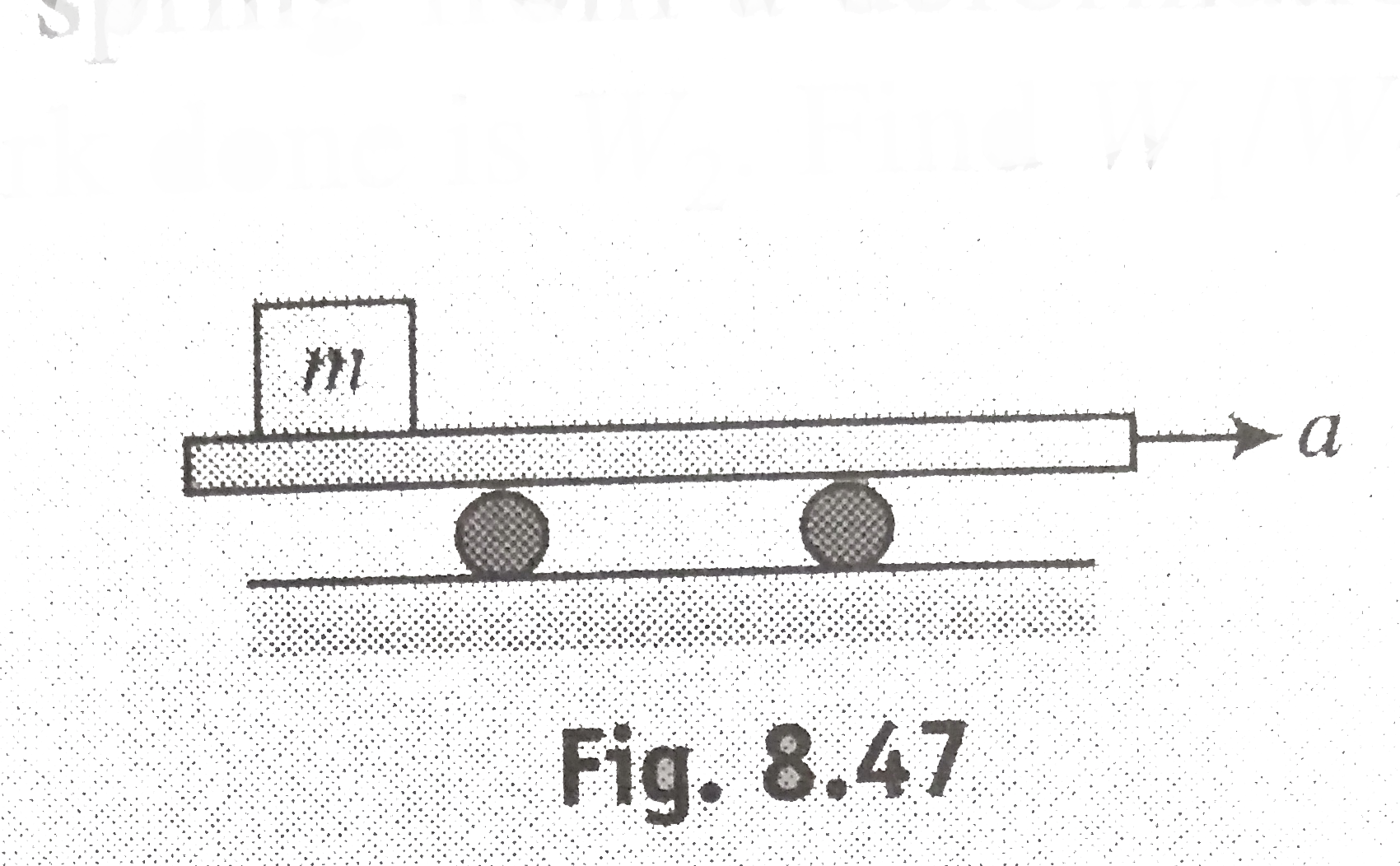Complete Solutions to Exercise 8.1 of chapter WORK, POWER & ENERGY of Class 11 book with complete answers and questions
| Class 11 | PHYSICS |
| Chapter | WORK, POWER & ENERGY |
| CENGAGE PHYSICS | Exercise 8.1 |
| Number Of Questions | 25 |
| Academic Year | 2023-24 |
Discuss whether any work is being done by each of the following agents and, if so, whether the work is positive or negative: (a) a chicken scratching the ground, (b) a person studying, (c) a crane lifting a bucket of concrete, (d) the gravitational force on the bucket in part (c), and (e) the leg muscles of a person in the act of sitting down.
04:18View SolutionState the following statements as true or false.
a. The work done by a force on a body is equal to the dot product of the force and displacement of the body.
b. Instantaneously, work is not defined.
c. When several forces act on a body, the total work is the same as the work done by their resultant.02:45View SolutionWhen we apply a force on a wall of infinite mass but the wall remains at rest, have we done any work on the wall? Does the wall do work on us?
03:46View SolutionWhen you walk on a surface, who does work on what? If the surface has more friction, will more work be doen? If the surface is frictionless and we try to walk, will any work be done?
04:45View SolutionA man is running down an inclined plane. Is he doing work or is work being done on him? Why is it that under normal circumstances when we are running down an inclined plane we feel that we are doing work?
02:57View SolutionA car is travelling on road at `50kmh^-1`. The driver applies brakes and brings the car to rest. Which frictional force does more work: (a) the force between the wheels and the brakes or (b) the force between the wheels and the road?
01:50View SolutionThere are two inclined planes with the same vertical height, but with different angles of inclination. Two bodies of mass m each are placed at the bottom of the inclined plane. Two external forces of equal magnitude do work in taking the bodies to the top of the inclined plane. Which force does more work?
01:29View SolutionIn a tug of war, one team is giving way to other. What work is being done and by whom?
01:48View SolutionA cyclist comes to a skidding stop in `10m`. During this process, the force on the cycle due to the road is `200N` and is directly opposite to the motion.
a. How much work does the road do on the cycle?
b. How much work does the cycle do on the road?02:42View SolutionA gardener moves a lawn roller through a distance of `100m` with a force of `50N`. Calculate his wages if he is to be paid 10 paise for doing `25J` of work. It is given that the applied force is inclined at `60^@` to the direction of motion.
01:00View SolutionA body constrained to move along the z-axis of a coordinate system is subject to a constant force F is given by
`F=-hat(i) + 2hat(j)+3hat(k)` N
Where, `hat(i), hat(j), hat(k)` are unit vectors along the `x-,y-` and z axis of the system respectively. What is the work done by this force in moving the body a distance of 4m along the z-axis?02:45View SolutionAn object is displaced from point A(2m,3m,4m,) to a point B (1m,2m,3m) under a constant force `(2hati+3hatj+4hatk)` N. Find the work done by this force in this process.
02:07View SolutionAn object is displaced from positin vector `r_1=(2hati+3hatj)` m to `r_2=(4hati+6hatj)` m under a forc `F=(3x^2hati+2yhatj)N` Find the work done by this force.
02:24View SolutionAn object is displaced from a point A(0, 0, 0) to B(1m, 1m , 1m) under a force `vecF=(yhati+xhatj)N`. Find the work done by this force in this process.
02:10View SolutionA force `vecF=(3xN)hati+(4N)hatj`, with x in meter, acts on a particle, changing only the kinetic energy of the particle. How mcuh work is done on the particle as it moves from coordinates `(2m, 3m, 5m)` to `(3m, 0m, 6m)`? Does the speed of the particle increase, decrease, or remain the same?
01:44View SolutionA body moves from point A to B under the action of a force, varying in magnitude as shown in figure. Obtain the work done. Force is expressed in newton and displacement in meter.
 02:59View Solution
02:59View SolutionA `10-kg` block moves in a straight line under the action of a force that varies with position as shown in figure. How much work does the force do as the block moves from origin to `x=8m`?
 02:36View Solution
02:36View SolutionA force F acts on a body such that it is always at an angle of `45^@` to the direction of motion. The body moves in a circle and covers a semicircle of radius R. What is the work done by the force F?
03:23View SolutionA force F is exerted on a body of mass M, which is connected to a spring (spring constant k). The body has a constant acceleration a. Calculate the work done by the external force in moving the body by a distance D.
02:00View SolutionA body is thrown on a rough surface such that the friction force acting on it is linearly varying with the distance travelled by it as `f=ax+b`. Find the work done by the friction on the box if before coming to rest the box travels a distance s.
02:03View SolutionOne end of a fixed spring is pulled by an average force of `10N` through a distance of `5cm`, find the work done by the spring.
02:23View SolutionA block of mass m is pulled slowly by a minimum constant force on a rough (`mu`) horizontal surface through a distance x. Find work done by force F.
07:35View SolutionThe work done by an external agent in pulling a spring from a deformation of `10cm` to `15cm` is `W_1`. When pulled, the spring from a deformation of `15cm` to `20cm`, the work done is `W_2`. Find `W_1//W_2`.
 02:47View Solution
02:47View SolutionA block of mass m is kept on a rough plank which moves with a horizontal acceleration a. If the plank was at rest at `t=0`, and the block does not slide relative to the plank, find the work done by friction on the (a) block, (b) plane, (c) system, (block+plank) during time `t`.
03:47View SolutionIn the previous question, if `agtmu_sg`, find the work done by friction on the block during time t.
02:27View Solution
Exercise 8.1 questions and complete solutions for chapter WORK, POWER & ENERGY of CENGAGE PHYSICS (ENGLISH) of Class 11
